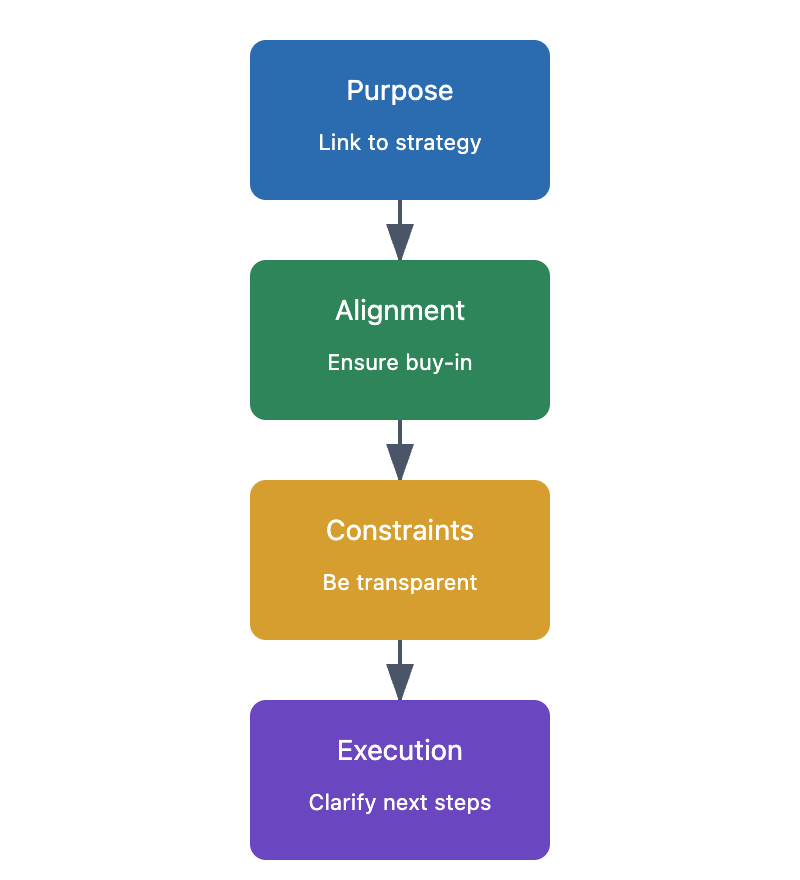Communicating organizational change with foresight is a hallmark of effective HR Business Partner (HRBP) practice. In this unit, you’ll learn how to reinforce strategic goals, set clear boundaries while maintaining momentum, and frame HR constraints as part of a structured, proactive plan. These skills will help you build trust, align stakeholders, and keep change efforts on track. As an HRBP, you play a critical role in translating business strategy into people outcomes, and your communication approach is central to this partnership.

As an HRBP, always anchor your communication in the organization’s broader strategy and people agenda. This means explaining not just what is happening, but why it matters for both the business and its employees. For example, rather than simply announcing a new reporting structure, you might say: "This new structure will help us respond faster to customer needs and support our long-term growth goals, while also creating clearer career pathways for our teams." By consistently linking changes to strategic objectives and talent outcomes, you help stakeholders see the bigger picture and understand the value behind each decision.
HRBPs are often the bridge between leadership ambition and operational reality. Leaders may want change to happen quickly, but it’s your responsibility to set realistic expectations while maintaining momentum. Use transparent communication to clarify what can be achieved, by when, and why certain steps are necessary. For example, if a leader pushes for an immediate rollout, you could respond: "I share your sense of urgency, and to ensure a smooth transition for our people, we’ll need two weeks to prepare training and resources. This will help us minimize disruption and maximize adoption." This approach acknowledges urgency while reinforcing the importance of a structured, people-centered process.
Every change initiative comes with constraints—such as resources, timing, or compliance. As an HRBP, frame these constraints as part of a proactive, risk-managed plan. For instance: "To meet our compliance requirements and support everyone through the transition, we’ll phase the rollout over three months, starting with pilot teams and gathering feedback before scaling." By outlining the process, timeline, and rationale, you demonstrate foresight and help leaders understand that constraints are being managed proactively, not reactively.
In the following exchange, the HRBP Milo demonstrates how to acknowledge urgency, set clear boundaries, and frame constraints as part of a structured plan:
- Milo: I know the leadership team wants this new process in place by next week, but I’m concerned we’re rushing and might miss something important for our employees.
- Natalie: I completely understand the urgency, Jessica. To make sure the rollout is successful and everyone’s prepared, we’ll need two weeks to finalize training and address any questions.
- Milo: That makes sense. How do we explain the delay to the rest of the team?
- Natalie: We can frame it as a phased approach:
"To ensure a smooth transition and meet compliance requirements, we’re starting with a pilot group and will expand over the next three months."This way, everyone understands the rationale and sees that we’re being thoughtful about the change.
Notice how the conversation remains solution-oriented and transparent, helping Natalie feel supported and aligned with the broader strategy.
